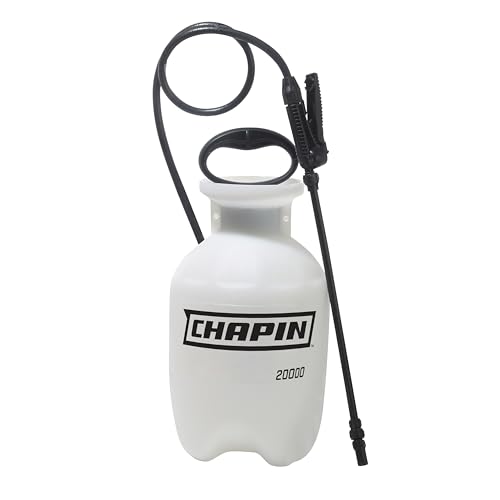How to remove algae from a fence – the easiest process and two methods you should never use
I asked an expert how to remove algae from a fence, and he gave me a foolproof solution


Wooden fences always look a little classier than their vinyl counterparts, but they have one big weakness: algae.
Damp, porous wood like fence panels and slats is the perfect habitat for algae to grow because it provides them with nutrients and moisture. In a few weeks, it can turn a garden fence into a drab grey-green mess.
Thankfully, it's pretty easy to fix. I spoke to an exterior wood specialist about the best way to clean this common problem, as well as the two methods you should never use. All you need is oxygen bleach and pump sprayer.
1. Use a wood cleaner and a pump spray

By far the best way to remove algae from a wooden fence is to use a wood cleaning solution, applied with a pump sprayer.
This is because wood cleaners are oxygen bleach rather than chlorine bleach. Unlike chlorine bleach, oxygen bleach is safe for nearby plants but will kill the algae. It can also remove sun-damaged wood fibers, which will also brighten the wood. Oxygen bleach opens up wood grain, so it's also great for preparing wood for staining.
The method is very simple. Fence and deck cleaning expert Scott Paul told me that all you need to do is 'Apply wood cleaner with a pump sprayer and then pressure wash "rinse" to remove any algae.' This will remove the algae from your fence. However this method isn't always practical, so you have some other options.

Scott has worked in pressure washing and exterior wood since 1993. He has founded and runs several pressure washing and exterior wood protection businesses, including his most recent, DeckStainHelp.Com.
2. Use a pressure washer - but gently

There are a few instances where using a wood cleaner isn't an option. For example, if your fence has thin slats rather than panels, it's probably not a good idea to spray chemicals onto it. The chemicals can easily end up in your neighbor's yard, potentially killing their plants, their lawn, or even harming their pets.
Design expertise in your inbox – from inspiring decorating ideas and beautiful celebrity homes to practical gardening advice and shopping round-ups.
In this case, a pressure washer is your best bet. It will remove all the algae, and if you already have a pressure washer, it's a cheap option.
However, you need to be careful. Scott Paul told me that 'Using a pressure washer without a proper wood cleaner can yield unwanted results or damage to the wood.' Pressure washers can be incredibly powerful, and if the wood is old or thin, you may find that your pressure washer takes chunk out of the wood.
Scott suggests using no more than 1600 psi on wooden fences. Anything higher than this will probably damage your fence.
3. A garden hose - if you have the time
If a wood cleaner isn't an option, and you don't have - or can't afford - a pressure washer, your next option is a garden hose. A garden hose on the jet setting can remove all the algae from a fence. However, it takes a very long time.
Scott Paul says 'While a garden hose can technically remove algae, it's not the most effective method. It is very gentle and is the most environmentally friendly while having the lowest chance of damaging the fence itself. But the lack of power will leave you standing there for a while.'
4. Avoid bleach and vinegar

You may see bleach suggested as a cleaning solution online, but you shouldn't use it on your fence panels. The first reason is environmental. Splashing bleach around outdoors can easily kill your plants and lawn. It can even make your soil infertile, ruining your garden for years. Even if you're incredibly careful, painting the bleach onto the slats of the fence by hand, it will run off the fence panels when it rains and damage your plants,
On top of that, bleach will weaken your fence over time. Scott Paul says that 'Bleach breaks down the wood fibers' lignin, creating internal damage to the cellular structure. Use a proper wood cleaner that is oxygenated.'
The same is also true of vinegar. Like bleach, vinegar can damage the wood in your fence, and worse than bleach, it isn't even effective.
5. Soap and water isn't a permanent solution

If none of the above are possible, scrubbing a fence with hot, soapy water can remove algae. However, this isn't a permanent solution.
Scott Paul warns that 'While it may remove the algae, it won't kill it entirely. You'll also have to put in a considerable amount of elbow grease and time to effectively hand clean it.' It's a lot of work for a solution that won't permanently solve your problem.
FAQs
Can you paint over fence algae?
Never paint over algae. It kills the algae on the surface, but not the algae in the wood, so the problem will return. I also leads to your paint peeling, because the algae are a bumpy surface underneath the paint that will make it chip and crack
All of the above also applies to cleaning vinyl fences, which can also grow algae and mildew. Vinyl fences can stand up to pressure washers better than wood fences, but you still need to keep the power as low as possible so you don't damage your fence.

As a gardens and lifestyle contributor, Alex makes sure readers find the right information to help them make the best purchase. Alex got his start in reviewing at the iconic Good Housekeeping Institute, testing a wide range of household products and appliances. He then moved to BBC Gardeners’ World Magazine, assessing gardening tools, machinery, and wildlife products.

